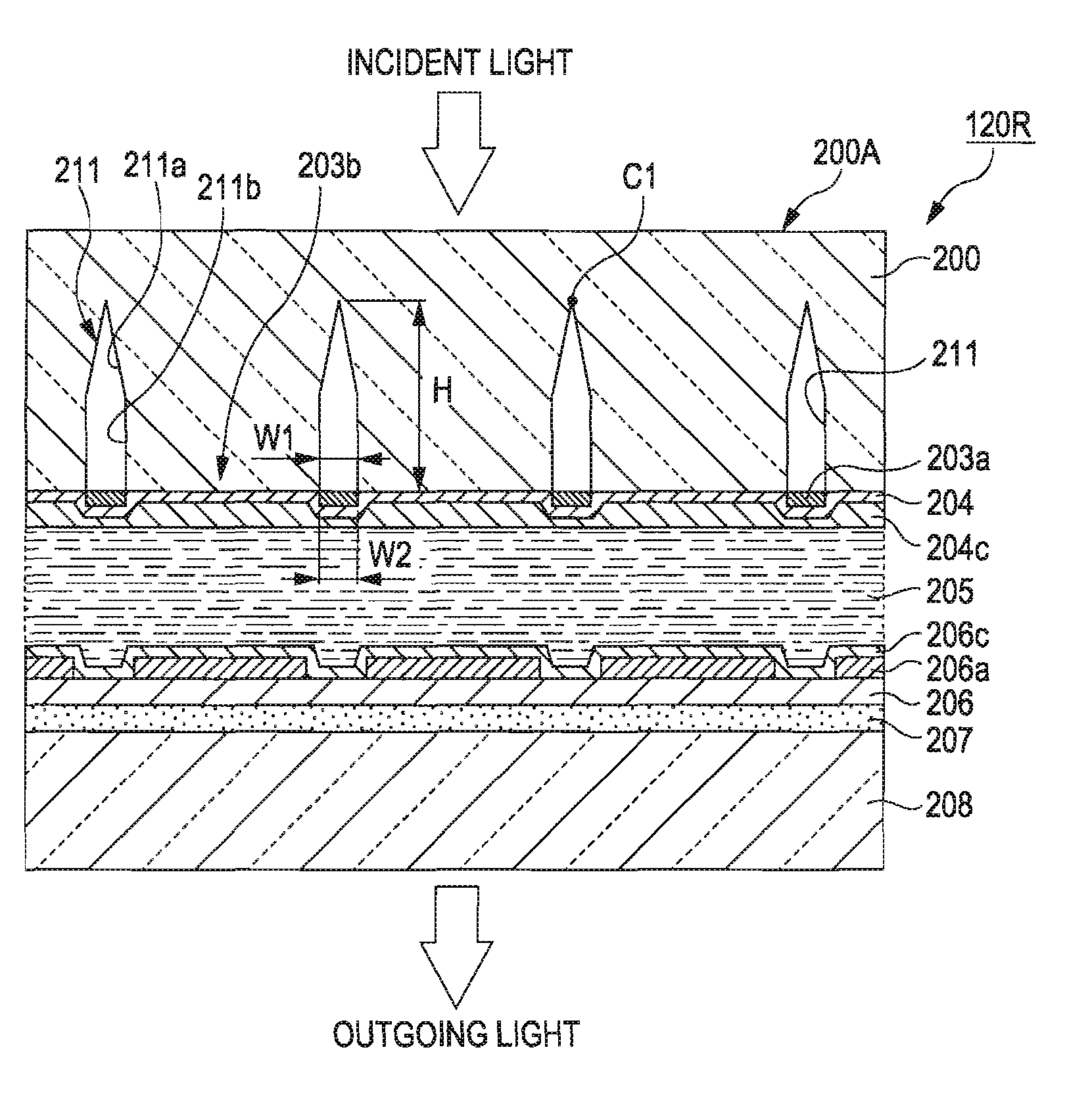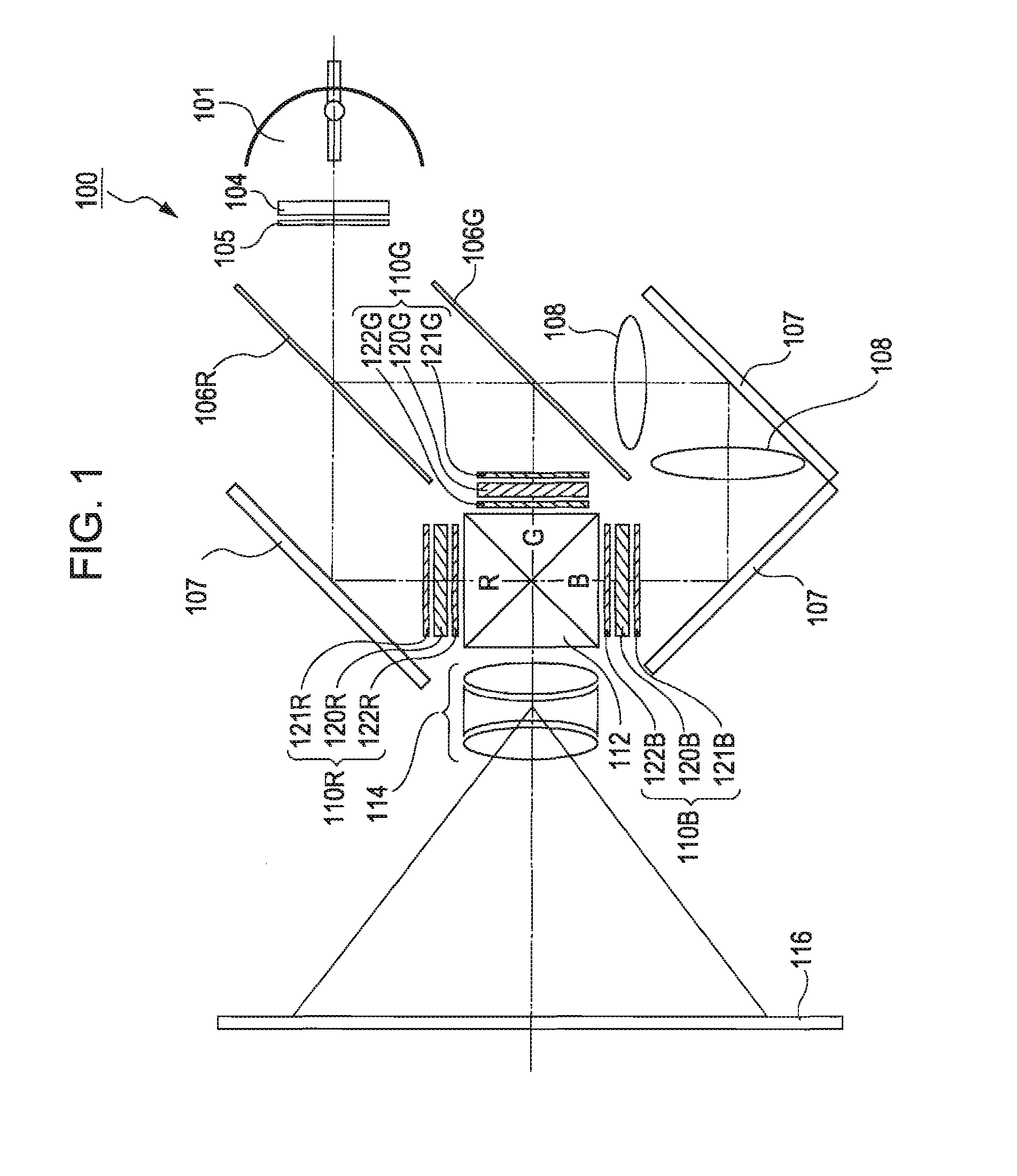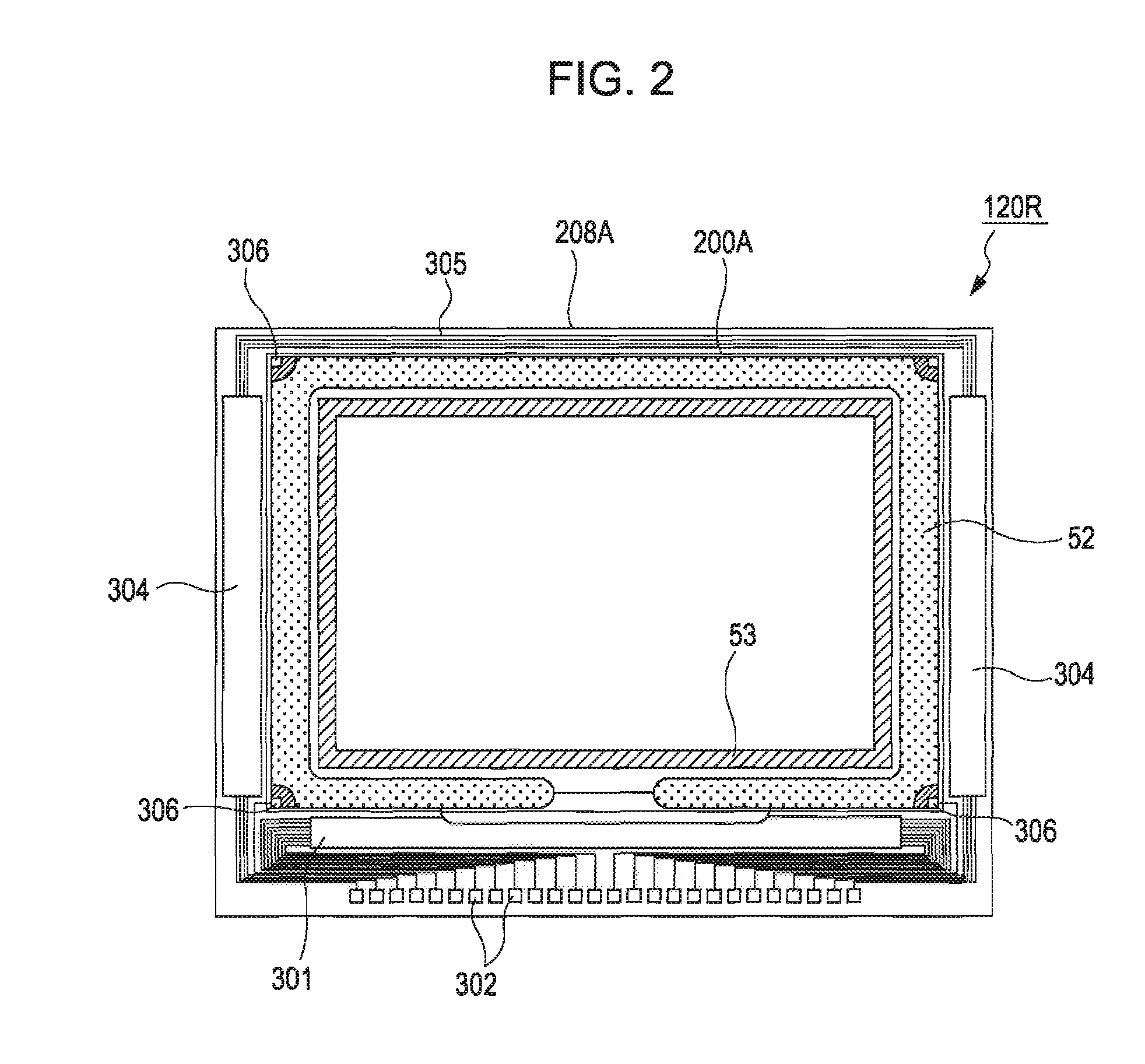Converging substrate, electro-optic device, substrate for electro-optic device, projector, and electronic apparatus
a technology of electro-optic devices and substrates, applied in the direction of optics, color television details, instruments, etc., can solve the problems of reducing the efficiency of light utilization in the projection optical system, reducing contrast, and increasing the ray angle of light rays entering the liquid crystal layer, so as to achieve bright display, prevent the deterioration of the electro-optic device due to the irradiation of light rays, and increase the contrast
- Summary
- Abstract
- Description
- Claims
- Application Information
AI Technical Summary
Benefits of technology
Problems solved by technology
Method used
Image
Examples
Embodiment Construction
[0056] Referring now to the drawings, embodiments of the invention will be described.
[0057]FIG. 1 illustrates a schematic configuration of a projector according to an embodiment of the invention. As shown in FIG. 1, an extra-high pressure mercury lamp 101 as a light source supplies a light ray including red light as first-color light (hereinafter referred to as “R-light”), green light as second-color light (hereinafter referred to as “G-light”), and a blue light as third-color light (hereinafter referred to as “B-light”). An integrator 104 uniformizes distribution of illumination intensity of light rays supplied from the extra-high pressure mercury lamp 101. The light ray whose distribution of illumination intensity is uniformized by the integrator 104 is converted into a linear polarized light having a specific direction of oscillation, for example, into s-polarized light, by a polarized light converting element 105. The light converted into the S-polarized light enters...
PUM
 Login to View More
Login to View More Abstract
Description
Claims
Application Information
 Login to View More
Login to View More - R&D
- Intellectual Property
- Life Sciences
- Materials
- Tech Scout
- Unparalleled Data Quality
- Higher Quality Content
- 60% Fewer Hallucinations
Browse by: Latest US Patents, China's latest patents, Technical Efficacy Thesaurus, Application Domain, Technology Topic, Popular Technical Reports.
© 2025 PatSnap. All rights reserved.Legal|Privacy policy|Modern Slavery Act Transparency Statement|Sitemap|About US| Contact US: help@patsnap.com



